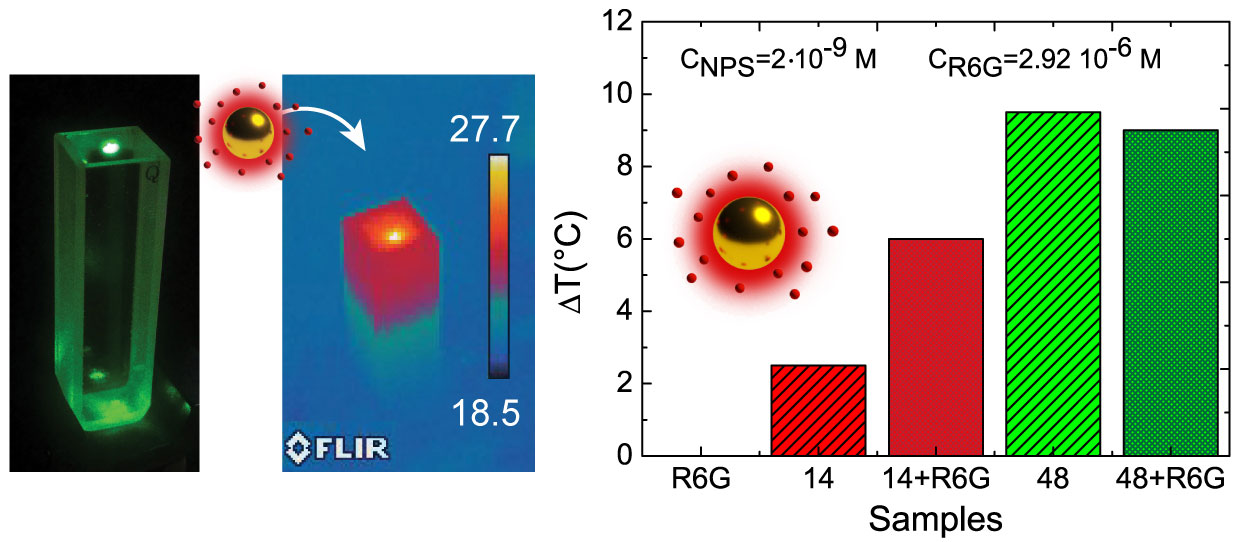G. Palermo, D. Pagnotto, L. Ricciardi, L. Pezzi, M. La Deda and A. De Luca
1- CNR-NANOTEC Istituto di Nanotecnologia and Department of Physics, University of Calabria, 87036-Rende, Italy.
2- Department of Chemistry and Chemical Technologies, University of Calabria, 87036-Rende, Italy.
Abstract
We report a detailed characterization of the photoinduced heating observed in gain-assisted solutions of gold nanoparticles (AuNPs). AuNPs, with sizes ranging from 14 to 48 nm and concentration of 2.5 x 10−10 M, are exposed to different intensity values of a resonant continuous laser (532 nm), used to excite their localized surface plasmon resonance (LSPR), responsible for the photogeneration process. In this way, the optimal conditions to achieve the maximum temperature variation with the least laser dosage are obtained. By the addition of an organic dye to the solutions, whose emission band overlaps to the LSPR, we found that the contribution to the photothermal efficiency is enhanced if the solutions are excited at 405 nm. This happens in the case of smaller NPs, due to a strong coupling effect between the two subunits, which causes an increase of the extinction cross-section of the whole gain-assisted system. On the other hand, for the larger AuNPs, an opposite behavior is found: a loss compensation mechanism, based on a resonant energy transfer process from gain units to plasmonic nanoparticles, limits the increase of the absorption cross section with a consequent lowering of the photothermal efficiency. The presented quantitative analysis of a dispersion of AuNPs results as fundamental for biomedical applications as well as for integrated plasmonic devices based on loss compensation effects, where the impact of undesirable thermal effects cannot be ignored.

